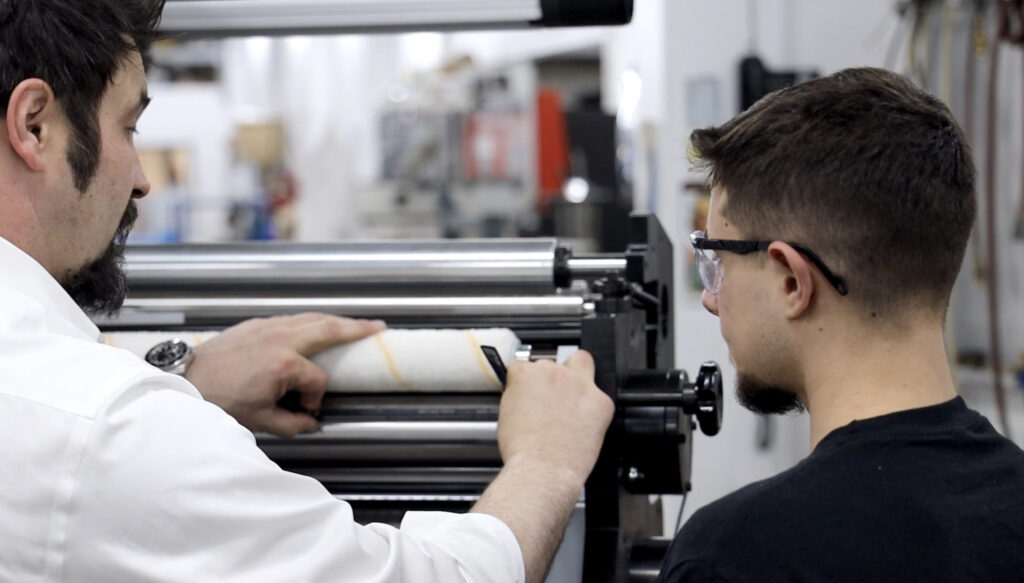Radio frequency identification (RFID) technology has been around for a while, although just recently are the expenses of implementing RFID more affordable to small and midsize businesses (SMBs). SMBs may have considered RFID technology cost-prohibitive in the past, although many larger customers and perhaps some of their suppliers are now demanding RFID technology and forcing SMBs to comply. Thankfully, there are affordable solutions for smaller businesses to implement RFID tags or labels and reap many internal benefits from this technology as well.
Calculating Expenses to Implement RFID Technology
Companies wishing to implement RFID technology can perform a cost-benefit analysis to help them determine a return on investment (ROI). For some companies, if their customers are demanding they implement RFID they may not have a choice, but evaluating all components and benefits will help to validate the expenses. Some of the most common components necessary to implement RFID technology include:
- RFID tags or labels to attach to products
- The antenna to receive RFID data and send it to the RFID reader
- An RFID reader that wirelessly connects to the antenna to capture data from the tag
- A computer database for application usage such as inventory management, receiving or point-of-sale transactions
Each of these components influences the total cost of implementing RFID, although the cost of tags can be a large contributing factor to the expense since a tag must be attached to every single product. There are different types of RFID tags such as active or passive tags which possess different types of RFID technology.
Difference between Passive and Active RFID Tags
Passive RFID tags perform basic functions such as sending radio waves to the antenna and contain basic components for the antenna and an integrated circuit. The RFID reader will read and store data as the radio waves convert to energy and activate the circuit. In some cases, new information can be written to passive tags.
Active RFID tags typically contain an internal battery, they may have additional sensors to capture specific product information and will have a longer range for transmitting data. There are basically two different main types of active RFID tags:
- Beacons – beacon tags continually transmit signals at predetermined intervals so that any RFI the reader within range can detect and record the information.
- Transponders – transponders are similar to passive RFID tags, as a reader initiates communication thereby alerting the transponder to send RFID signals back. This conserves battery life as opposed to beacons which continually send out signals.
Benefits of RFID Technology for SMBs
RFID technology is becoming increasingly popular in many industries and applications for any company that wishes to track products without the need to use line of sight technology like scanning a barcode. Companies that implement RFID technology to satisfy customer demands can also realize many operational benefits. Some of the most recognized internal benefits of RFID tracking include:
- Product tracking – real-time data available for all products improve logistics.
- Inventory management – companies with RFID product locations have an accurate snapshot of their inventory quantities and value at all times.
- High-value product tracking – RFID tags on high-value products significantly improve security.
- Event management – RFID tags or labels assigned to event-goers can help to monitor and control crowds and even allow access to certain areas.
- Historical data – some industries such as pharmaceutical or food applications benefit from a fully auditable product history. RFID tags can provide historical logistics data for industries that require “cradle to grave” tracking.
Implementing RFID technology provides these benefits to any size of business and is more affordable than ever before for small to midsize companies.
Tamarack® Products Offers RFID Inlay Insertion Equipment
Tamarack® Products designs, engineers, and manufacturers’ RFID inlay insertion equipment to produce RFID tags, tickets, and labels efficiently and cost-effectively. We offer the MVW Inline RFID inlay insertion system to produce RFID tags on a new or existing Flexo press in one pass. The Tamarack MVW Offline RFID Inlay Insertion System is customized to your specific requirements and is a completely offline platform.
Tamarack® Products has been providing specialized equipment for use in the packaging, business form, and label industries for more than 50 years. We are recognized worldwide for manufacturing high-quality equipment and differ from other equipment manufacturers with our technical expertise and value-added services. Contact us to learn more about RFID inlay insertion equipment for any size of business.





